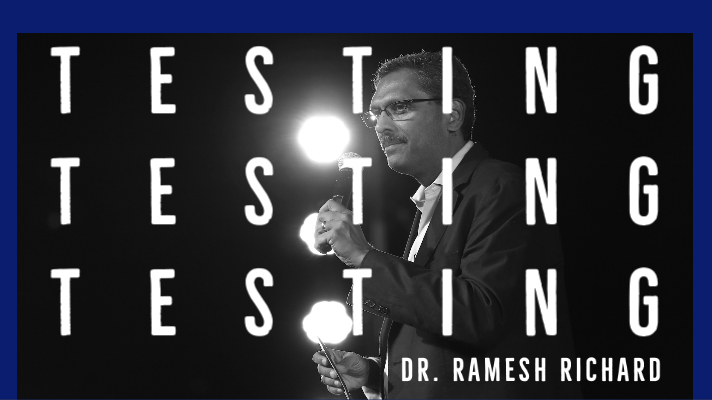KH: You’ve written before that preaching Christ must arise out of the Word and should lead us to the table, creating a worshipful experience encountering Christ there, at church. What do you mean by this, and why do you think it’s such an important idea?
CS: I got that out of the Church of England liturgy, going all the way back to Thomas Cranmer and the way in which the origin of worship in the Church of England was set out. These three elements were put together: there was reading of the Word, there was the sermon, and then there was the Lord’s Table. Cranmer organized that order of service because he believed deeply that preaching should arise from the Word. So, you begin with the Word read, and then you have the Word preached, and where it should end is it should lead us to the table. Now in our church here at the Orchard, we don’t always have the Lord’s Supper every Sunday; we do it once a month. Churches vary in their practice in that regard.
But the point is that when I’m preparing to preach, I’m always thinking, what would be a natural bridge to the Lord’s Table? I want every sermon to end with a sense of, “Thank you, Lord. Thank you for what’s mine in Jesus Christ.” I want every sermon to end with a sense of people being invited to receive what Jesus Christ holds in His hand. There has to be that offer, that invitation, that sense of meeting with Christ at the end. So that very simple little bridge, preaching is a bridge from the Word read to the Lord’s Table. Conceptually, that’s really helped me to think about what I’m trying to do in the course of a sermon.

KH: That’s wonderful, and you really engage with Christ with different senses. You know, auditory, when you hear the Word, but also more tactile through communion and also remembering what He’s done for us. In thinking through preaching Christ, what are some potential pitfalls a preacher might fall into?
CS: The way that I try to think about this and to encourage others to think about it, Kevin, is that we’re called to preach Christ. That’s the first thing. We’re called to do this in a way that is biblical, theological, clear, and compelling. These are like four sides of a sandbox around preaching Christ.
I think the most obvious pitfalls are speaking about Christ in a way that’s dislocated from the text of the Bible. That would be not doing it in a way that’s biblical or missing the great truths about Jesus Christ. That’s preaching Christ in a way that’s theological. [Or, as LRI’s training would put it, using Biblical Theology in preaching.] We want to preach Christ in a way that is clear. We don’t want to get lost in profound language that ordinary people can’t understand. We want to do it in a way that’s compelling. What that means is there must always be a connection between the proclamation of Christ and what a person can actually receive from Christ. It’s not simply information about Jesus. Christ is being held forth as the fount of all the gifts of God in such a way that as I hear Him presented, I’m drawn to say, “Now I must receive from Him.”
KH: I think every preacher wants to be transformative in their preaching. They want their people to leave changed people. Can you speak to the relationship between preaching Christ and application in sermons?
CS: I think that that’s the distinction that I have in mind between preaching about Jesus and preaching Jesus. It’s more than “Oh, Jesus said this, or Jesus did this; isn’t that interesting.” It’s, “Here is Christ. Here’s what Christ does, and here is what He offers to you right now that you can actually receive here and now.”
For example, “I can do all things through Christ who gives me strength” (Philippians 4:13). Christ gives me strength. What’s being held forth in that verse? It’s that Christ actually communicates strength that is matched to the particular burden that any person in the congregation listening to the sermon at that time is actually carrying. I want to hold forth not simply a strong Christ but a Christ that gives strength.
That’s just one example, but there’s a difference. It’s hard to put it into words, but there’s a difference between merely communicating truths about Jesus and actually holding forth a Jesus who has the power of transformation and brings the power of transformation in His own self.
KH: It reminds listeners there’s a living Savior who rose from the dead who intercedes for them and is on their side.
CS: And you can come to Him right now, and He has all that you need. Yes, there’s an invitation. There’s a response, and that’s the heart of application. Someone listening to the sermon needs to have the sense that there’s something here for me, and therefore, they feel a drawing to move towards what is being proclaimed – or rather the one who is being proclaimed.
In Part Three, Colin Smith shares examples of preaching Christ from two passages.




 Servant of the Word. Husband. Blogs weekly at
Servant of the Word. Husband. Blogs weekly at 
